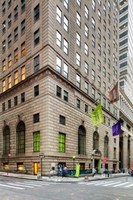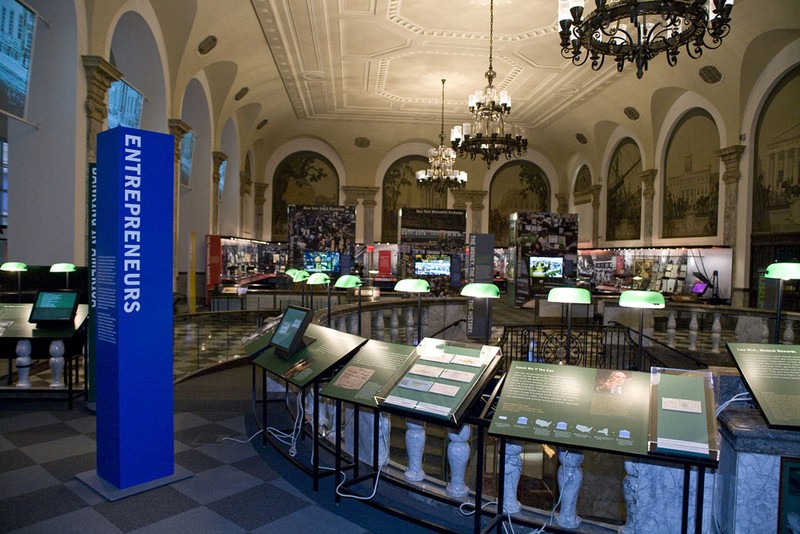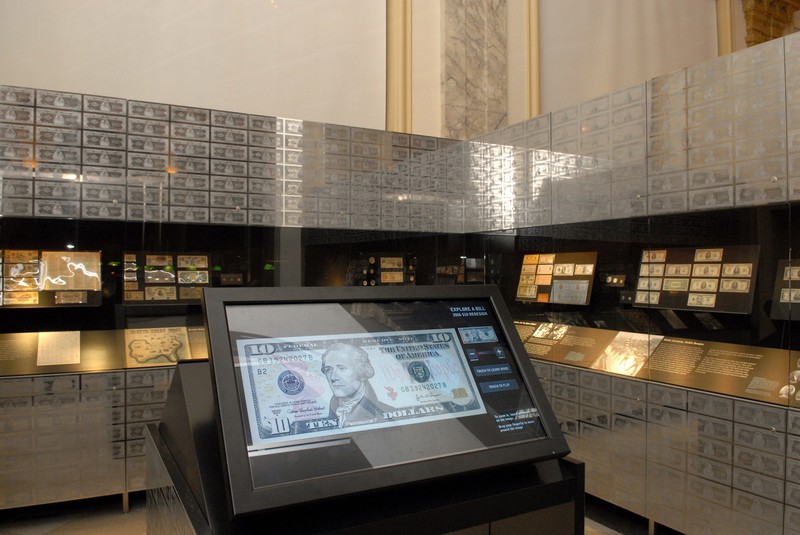Museum of American Finance
Introduction
Text-to-speech Audio
Images
Front facade of the museum

Exhibit on the history of American Entepenuers

Money Gallery. Image by Elsa Ruiz. Licensed under CC BY-SA 3.0 via Wikimedia Commons.

Backstory and Context
Text-to-speech Audio
Founded in 1794 by Alexander Hamilton, the Bank of New York opened its first building at the Walton House in Lower Manhattan on June 9, 1784, only a few months after the departure of British troops from American soil. In 1797, the Bank commissioned a new headquarters at 48 Wall Street. This two-story Georgian building served as the bank’s headquarters through the beginning of the 19th century. Although the original building no longer stands, its cornerstone can be seen at the current 48 Wall Street building.
The Bank instructed architect Benjamin Wistar Morris to incorporate something of the institution's Colonial history in the design. That history is evident inside the main banking hall, where eight murals by J. Monroe Hewlett illustrate the story of American commerce and the life of the Bank of New York. From the outside, the building’s major Colonial reference can be seen from a distance: a tower reminiscent of an 18th-century church, but thirty stories up in the air—definitely the only Colonial tower in the downtown skyline.
The 30-foot-high main hall of the former Bank of New York building became a home of the Museum of American Finance on January 11, 2008. Before opening in its current location, the Museum of American Finance was housed in the Standard Oil Building at 26 Broadway. Founded in 1988 by John Herzog as the Museum of American Financial History, the Museum changed its name to more accurately reflect its focus on American Finance.
With more than 10,000 items in its permanent collection, the Museum holds the world’s largest archive of financial documents and artifacts. As an affiliate of the Smithsonian Institution, the Museum has access to all of the Smithsonian’s collections as well as access to collections at other museums. The Museum of American Finance also publishes a quarterly journal, Financial History, which reaches members in all 50 U.S. states and 20 other countries. Visitors can see special exhibits including “The Fed at 100,” which examine the nation’s central bank and the role it has played throughout its history. Also on view is a jewel encrusted 18-karat gold Monopoly set.
Sources
Alexander, Michael. "US Coins." Coin Update. September 22, 2014. Accessed April 01, 2017. http://news.coinupdate.com/interview-with-the-director-of-exhibits-at-the-museum-of-american-finance.
"Museum of American Finance." Wikipedia. March 30, 2017. Accessed April 01, 2017. http://en.wikipedia.org/wiki/Museum_of_American_Finance.
